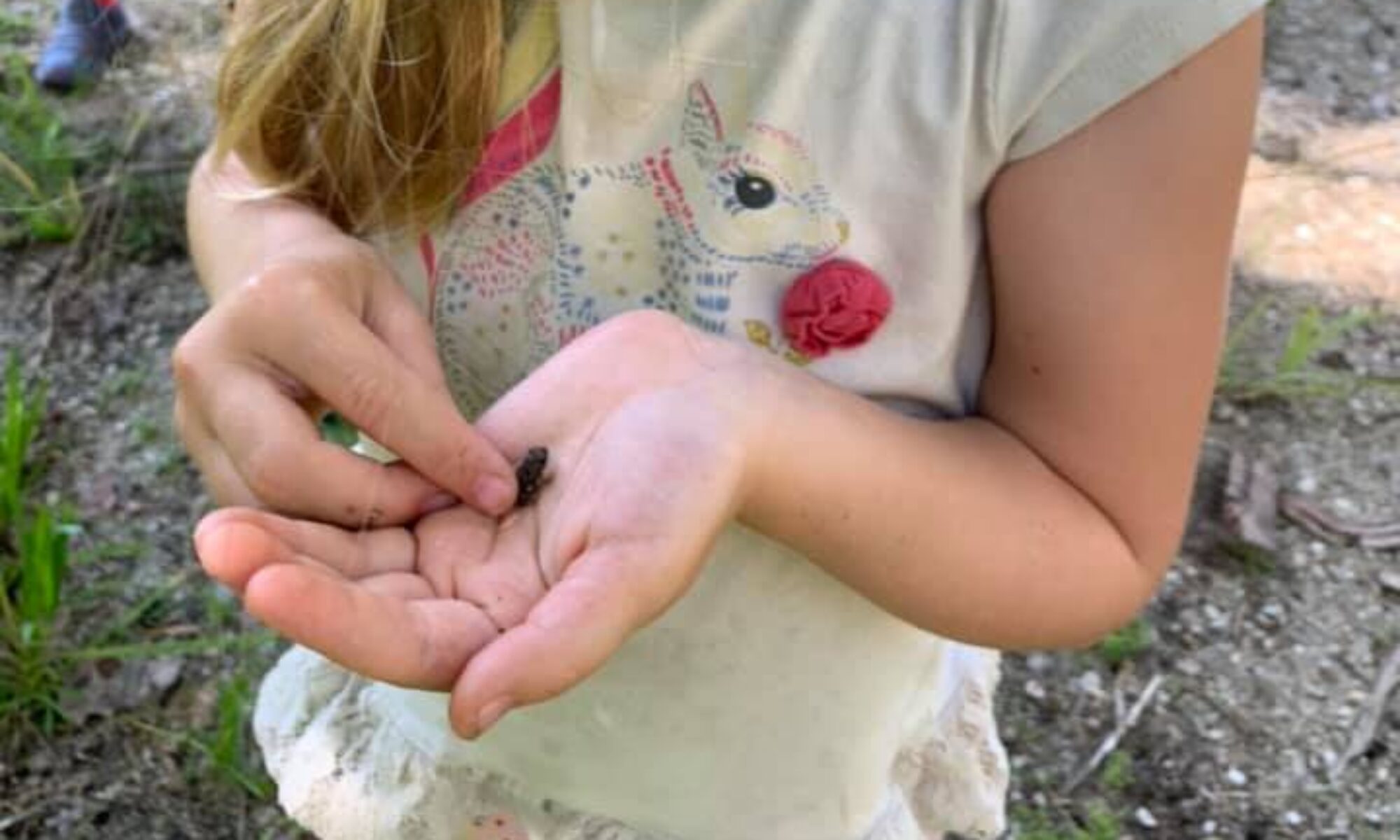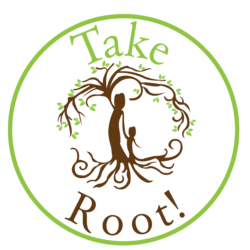The curriculum for Take Root Forest School’s homeschool age programs emerges through multiple layers – layers that are connected to Nature & Place, Self & Community. The curriculum emerges, not only from the predictable rhythms of the seasons, but also from the innate wonder, curiosity and interests of the children as they meander through the forest.
The Take Root team of teachers and nature guides breaks everything down into a flow of learning by building a curriculum and connecting it to the children’s experiences as they have them. Using the seasonal shifts, the local ecology, community, place, and age-appropriate standards, the teachers and directors create a well-rounded, whole-child, experiential process that inspires creativity and love for learning.
Take Root Forest School’s multi-subject approach to learning – integrating wider subjects and disciplines while focusing on exploration, play and discovery allows for development of the whole child…Head (through transformative experience and reflection), Heart (through relating and or connecting on a deeper level) & Hands (through hands-on engagement).
Using the Seasonal Flow and the Themes of Learning as their foundation, each teacher creates and fills a repertoire (a “bag of tricks”) of stories, songs, lessons, projects, activities, games, etc. that may be used throughout each season. Inspired by various holistic methodologies, the teachers combine language arts, cultural studies, history, science and mathematics, place-based ecology and stewardship with the forest school approach based on the rhythm of the seasons, sensory awareness and the students’ discoveries of “place”. This model integrates multiple progressive learning pedagogies in an effort to construct holistic learning using a variety of resources, and curriculums, not limited to: Wild Learning, Blossom & Root, How to TeachNature Journaling, Live Education, Oak Meadow, and Enki Education. Other resources available include past Nature Seekers and Treehouse Learning curriculums, children’s literature, environmental education programs, the online library, etc.
Objectives and goals are laid out for each group using standards of learning, developmental domains and educational principles that are relative to each age group. The 5 domains of child development are emphasized, these include: physical, cognitive, communicative, socio-emotional, and adaptive. Research suggests that providing a balanced learning opportunity in all of these areas allows for children to reach their full potential and future success.
The teacher scaffolds and builds – creating thematic, experiential units that emerge from the interests of the group. The THEMES OF LEARNING are woven into the day through stories, songs, movement, games, group activity and lesson time, forest discovery and play – all working together to create a well-rounded, holistic process of learning. Learning is presented in a variety of ways – child directed through discussion, stations, projects and group lessons.
At Take Root Forest School the THEME may shift – based on curiosity, interest and what is happening in nature and place. The FOCUS of each day is pre-determined by which program the child is attending (Tender Roots – Ages 3-4 – Pre-homeschool, 3 Day Program or 1 Day Program – Ages 5-12 – Homeschool). The daily schedule remains static throughout the week – providing anchor points to rely on.
SCHEDULES CREATE ROUTINE
Ages 3 & 4 – Tender Root Forest School Program
| 9:30 | Arrival & Community Play |
| 9:30-10 | Morning Circle with Song, Story, Movement |
| 10-10:40 | Snack |
| 10:40-12:20 | Free Range in the Forest – Deep Play, Invitation Stations and Blanket Projects |
| 12:20-12:45 | Second Snack/Lunch |
| 12:45-1pm | Dismissal |
The focus of the Tender Roots program is on PLAY. At this age children process and learn through play. The teacher gently guides the Tender Roots children daily in this process. By weaving song, story and movement into the daily routine, the teacher creates a rhythm for learning and growing – developing socio-emotional skills that allow the kids to learn their role and how they fit into the community and the wider world while inspiring a love for nature and place. Projects and stations may include arts & crafts, tool introduction, building and creating, mud kitchen, digging and play. Literacy is woven into the day using oral story, out loud book reading, descriptive language, memorization of verses, and song. The children develop spacial awareness, sensory awareness and sense of self in Forest School. They categorize, count, observe, hypothesize naturally, with the forest as their guide. The foundations are set up for future engagement in the core subjects and life.
Ages 5-12 – Homeschool Forest School Program
| 9-9:30 | Arrival – Play, Community Circle & Song |
| 9:40-10:15 | Morning Meeting, Wash & Snack |
| 10:15-12:15 | MORNING BLOCK – Focused in the Forest or Free Range in the Forest (group choice) |
| 12:15-12:45 | Wash & Lunch |
| 12:45-2:45 | AFTERNOON BLOCK – Focused in the Forest or Free Range in the Forest (group choice) |
| 2:45-3:00 | Walk Out, Closing Song, Dismissal |
The homeschool program involves bringing together two main times of the day – combining Forest School Principles with holistic, whole-child learning: Focused in the Forest Time & Free Range in the Forest Time. Each day the groups are able to experience both of these learning models.
Focused in the Forest Time – Thematic Morning Circle, Story and Experiential Main Lesson and/or Activity that promotes routine and focus and allows the children to apply knowledge or a skill through practice (reading, writing, math, science, social studies, arts and crafts, etc.). This time is planned and led by the teacher, but inspired and “guided” by the children, in that each child is acknowledged, with attention given to the children’s needs, abilities and skills – providing a safe environment for each child to learn at the pace best for them.
Free Range in the Forest Time – Purposeful nature connection time – the teacher and the kids are out in the forest roaming, ranging, exploring, discovering, socializing, playing, working. During this block of time, the group will collaborate together to determine the free range time. Projects like woodworking, felting, finger knitting, nature journals, field guides, etc. may be included. The teacher may start or end with a thematic game or activity or the entire time may be dedicated to shelter building and woodland skills or providing the students time to “build” a forest town. The idea of this time is to allow for more child-led discovery and play – the time for the kids to build, create, talk, invent, imagine, sit – assisted and supported by the adults – monitoring for safety and health of the community. The teacher and the kids together may determine how the flow of this time goes.
Throughout the year, each teacher sets the scene and holds the space in order to build, maintain and nourish a healthy habitat in the Forest School Ecosystem. The relationships established are the core of the forest school values. As a team, Take Root Forest School builds, maintains and nourishes the relationships – creating community by integrating experiential, holistic activities, lessons, projects and games and by maintaining the Three R’s (Rules of Respect, Routine, Rhythm) with consistency and gentle guidance.

